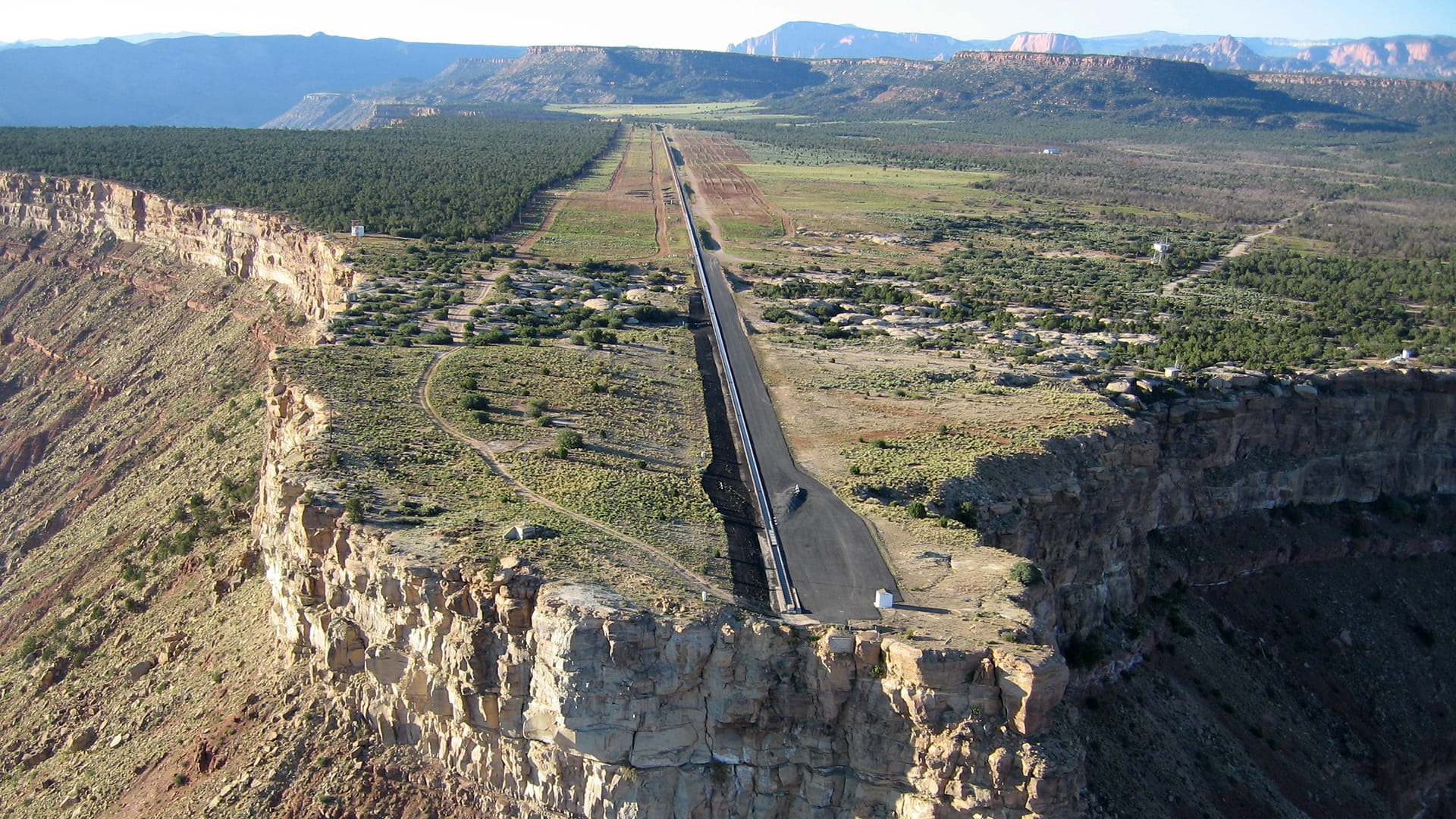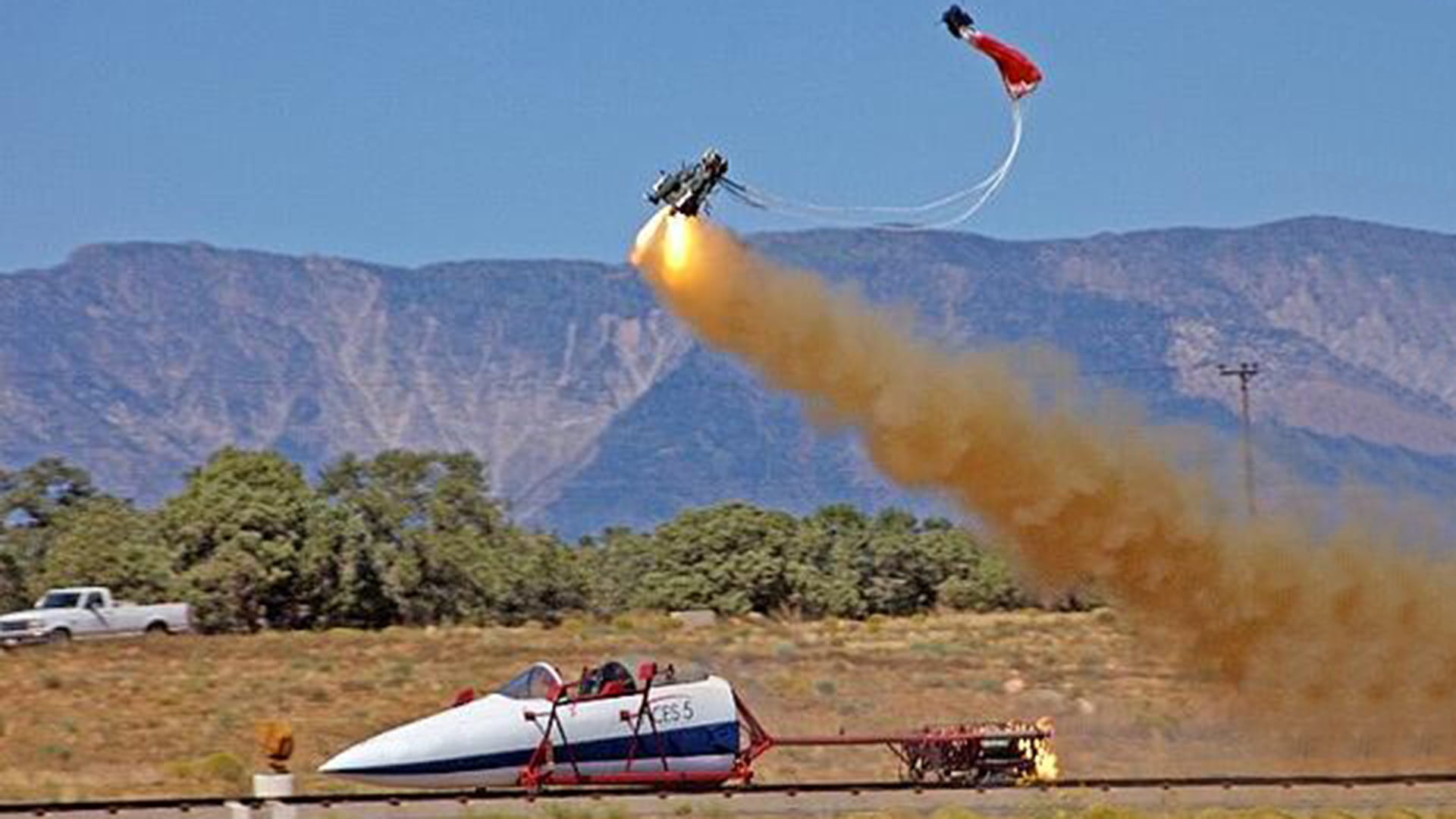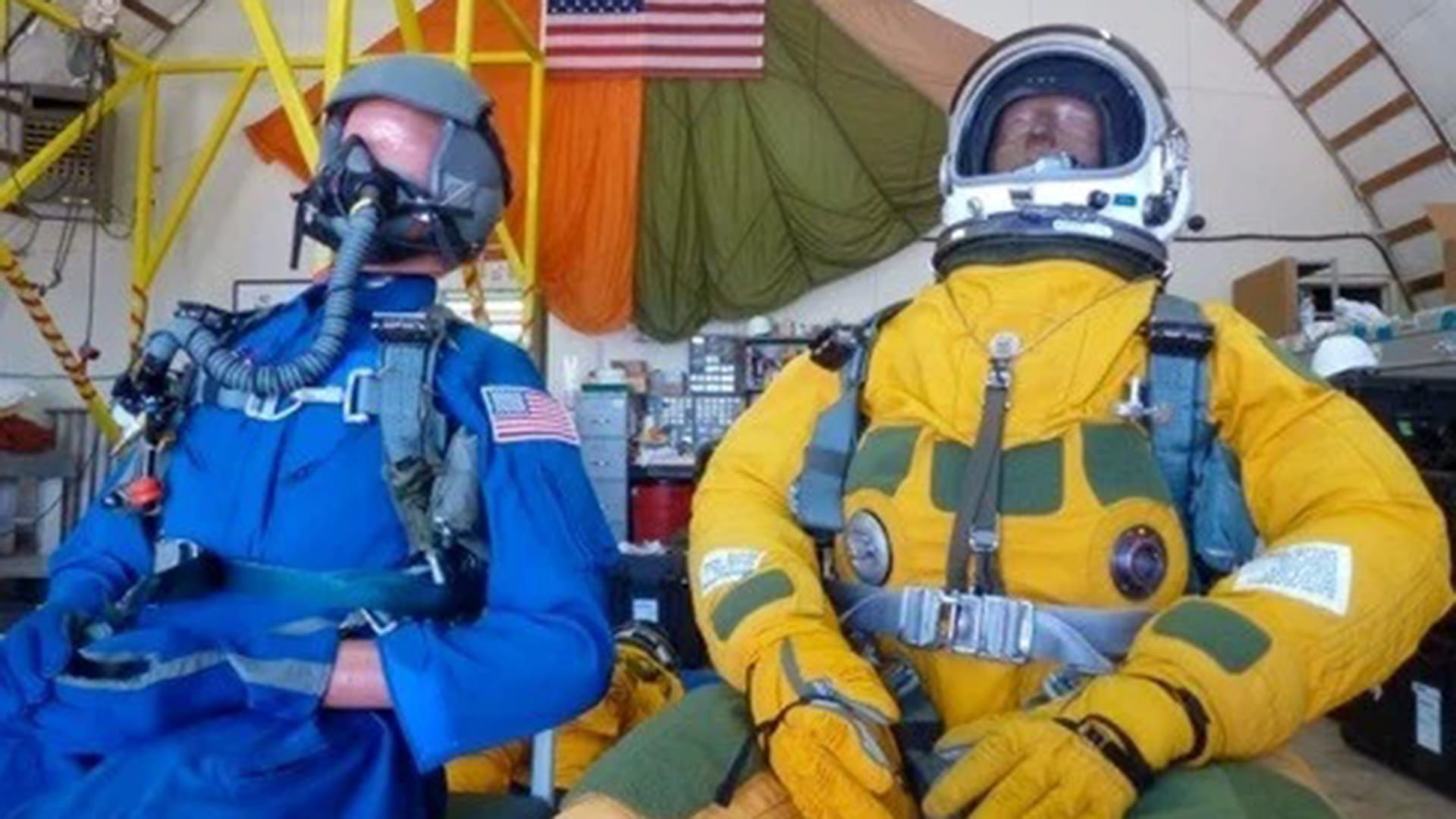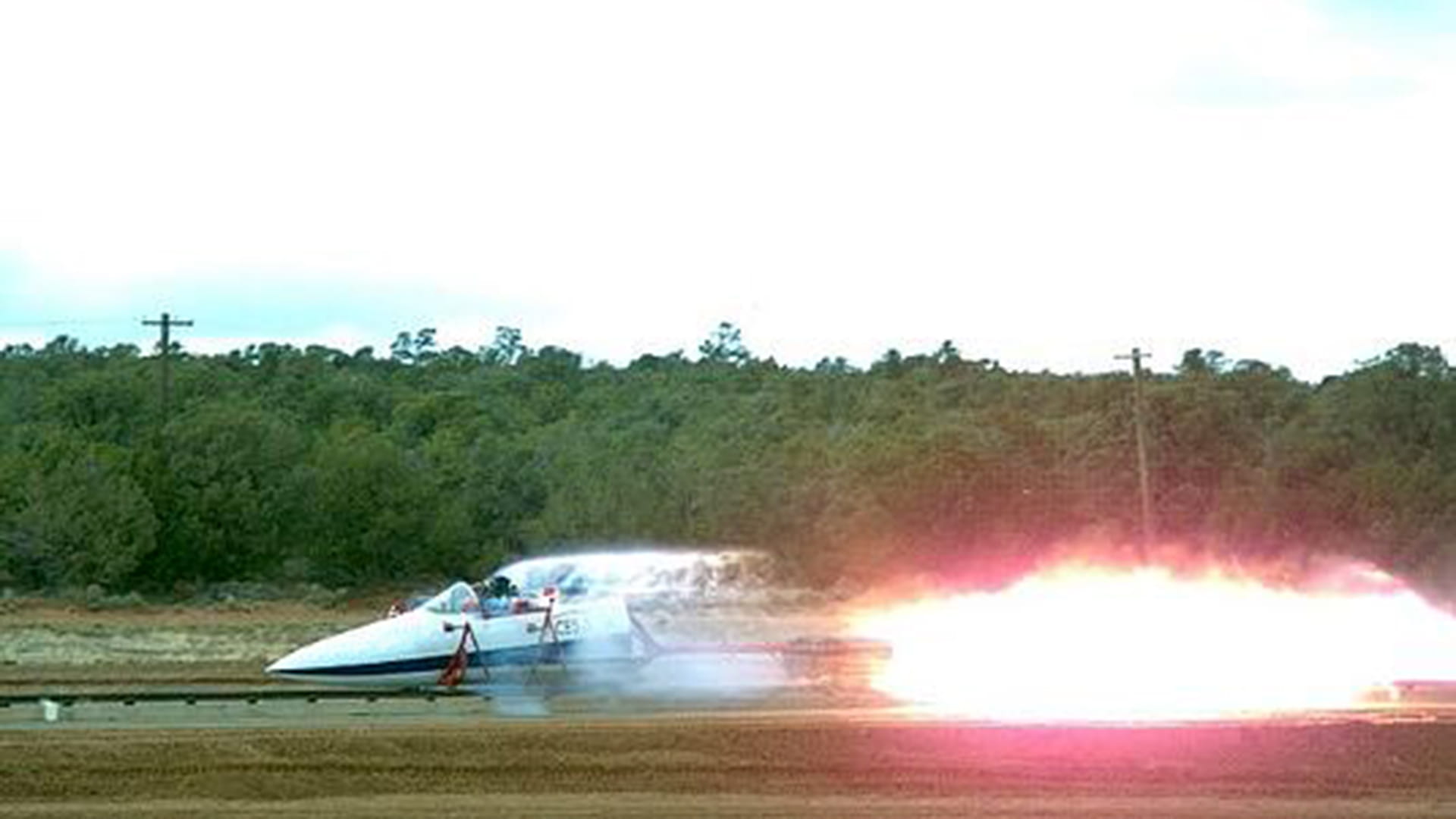September 17, 2018 - There’s only one thing on the horizon when you’re driving toward Zion National Park from St. George, in southwestern Utah, a formidable mass rising from the flat landscape known as Hurricane Mesa. It is capped by the only private supersonic-capable aircraft ejection test track in the United States, owned and operated by UTC Aerospace Systems. It’s here where LOIS has worked the test track for decades, along with LARD and their grandfather “Hurricane Sam,” who set a world land-speed record of 1,800 miles per hour at the site. Of course LOIS, LARD, and Sam are anthropomorphic test dummies whose main objective is to simulate human ejections from an aircraft at various speeds and record test data through a series of high-precision sensors.

Constructed by the U.S. Air Force in 1954, the Hurricane Mesa Test Facility is a one-of-a-kind complex where UTC Aerospace Systems has tested its ACES ejection seats since the 1980s. The Mesa’s 12,000-foot test track of heavy-duty rails runs straight to the edge of the cliff, where Sam once catapulted over the 1,500-foot precipice before descending with his parachute to the valley below. Today, LOIS and LARD ride these same rails in an ACES 5® ejection seat, safely descending back on the mesa (avoiding the cliff!).

Why no more cliff jumps? Because ACES 5 ejection seats are now “zero-zero” with respect to altitude and speed. The first zero refers to altitude and essentially means that pilots can safely eject even when at ground level if ever faced with a low-altitude emergency during takeoff or landing. The other zero refers to ejections at low speeds or when an aircraft is stationary. And with a test track like Hurricane Mesa, the sleds can go anywhere from zero-zero to faster than the speed of sound.

As U.S. Air Force requirements evolved, in the 1990s LOIS and LARD replaced Hurricane Sam, to evaluate the continued innovation and high-tech safety improvements in ACES seats. Short for “Lightest Occupant In Service,” LOIS simulates a 103-pound female aircrew. Her male sibling LARD, the “Largest Anthropomorphic Research Dummy,” is a heftier 245 pounds. Together, the two represent opposite ends of the U.S. Air Force’s recently expanded weight range for pilots, which new Air Force ejection seats must be able to accommodate. And, with advanced sensors embedded in LOIS and LARD’s, head, neck and spine, loading can now be measured to determine the probability of aircrew injury - essential test data not previously available when their grandfather Sam was around. This test data helps the ACES 5 team study and ensure safer ejections even at the high speeds modern aircraft typically operate.
Most recently, LOIS and LARD have ridden these rails in an ACES 5 ejection seat in preparation for the seat’s deployment into the United States’ B-2 Spirit bomber fleet. And when these two suit up, it is always a clear, sunny day—a day when nature most resembles a spotless, outdoor laboratory. The clarity allows 20+ high-speed digital cameras to capture pictures as high as 1,000 frames per second for the entire test event. Engineers later align these videos with the reams of data collected by high-fidelity sensors in the seat and dummies, so that what’s happening visually can be compared to any particular measurement: such as when the restraints deploy, when the parachute opens, or when LOIS or LARD detach from the seat.

To power the test itself, three “pusher sleds” are positioned at the rear of the sled. Collectively, the sleds hold as many as 120 Mk-10 “Holy Moses” rocket motors, which have been gently lowered in place by a crane. These rockets are ignited in six different stages, with each rocket motor providing 5,300 pounds of thrust for 0.89 seconds. The result is a test that sometimes breaks the sound barrier, accelerating LOIS and LARD up to 750 mph. Ejections occur about 6.7 seconds after the sled rockets ignite. By the time you hear the rockets, the seats have ejected and the test sled is already several thousand feet down the track. There’s a lot of adrenaline pumping during the full test, which lasts only about 17 seconds from initiation to when LOIS and LARD safely land. During the ejection test event, we’re looking for seat stability, fully inflated parachutes and LOIS and/or LARD descending slowly and steadily to the ground, among other key factors.
Following seat ejection, the sled is halted by 65,000 gallons of water. A scoop on the sled picks up that water, discharges it overhead, and picks-up additional water to create a reverse thrust effect that results in the equivalent of stopping your speeding car on a dime.
This is the closest simulation we have created to a real pilot ejecting from an aircraft. More than ever, we can accomplish incredible things with modeling and digital design, but these real-life tests are essential. Having this one-of-a-kind facility has been an absolutely critical part in letting us continually improve the safety, performance, and design of ACES 5.
Already a unique complex in the country, UTC Aerospace Systems is in the process of expanding our facilities at the Hurricane Mesa Test Facility to include additional structures and new sleds. With ACES 5 testing now complete for the United States’ B-2 bombers, the cutting-edge ejection seat is now undergoing further testing for potential inclusion on T-X trainer aircraft and as part of the Air Force’s Next Generation Ejection Seat program.
